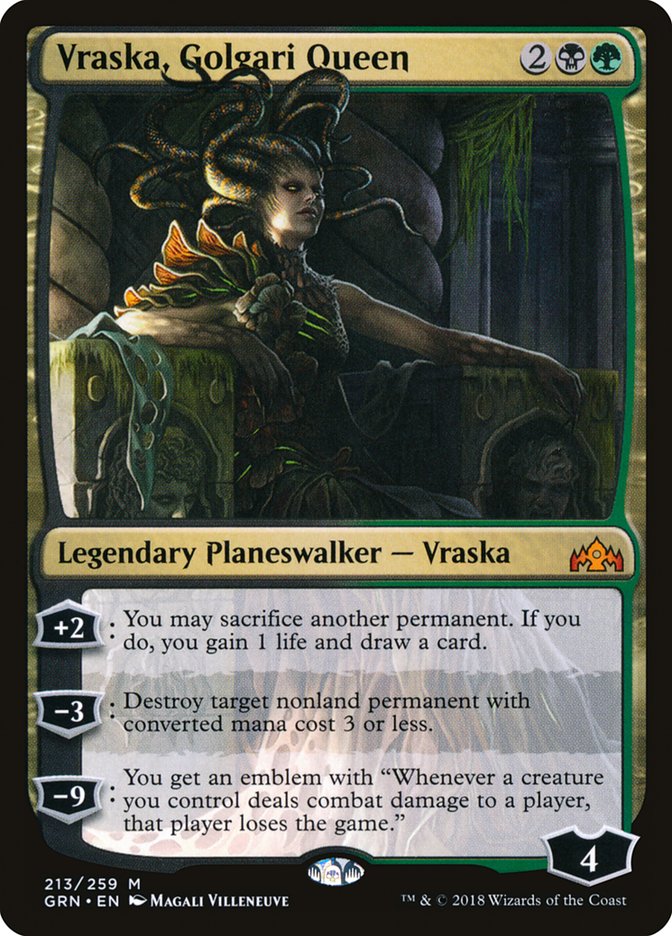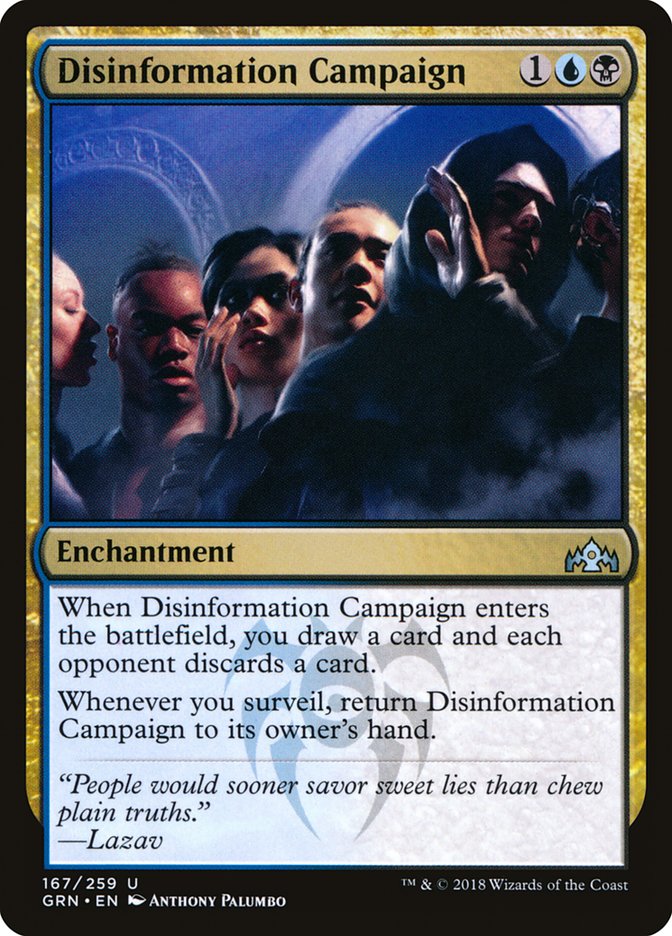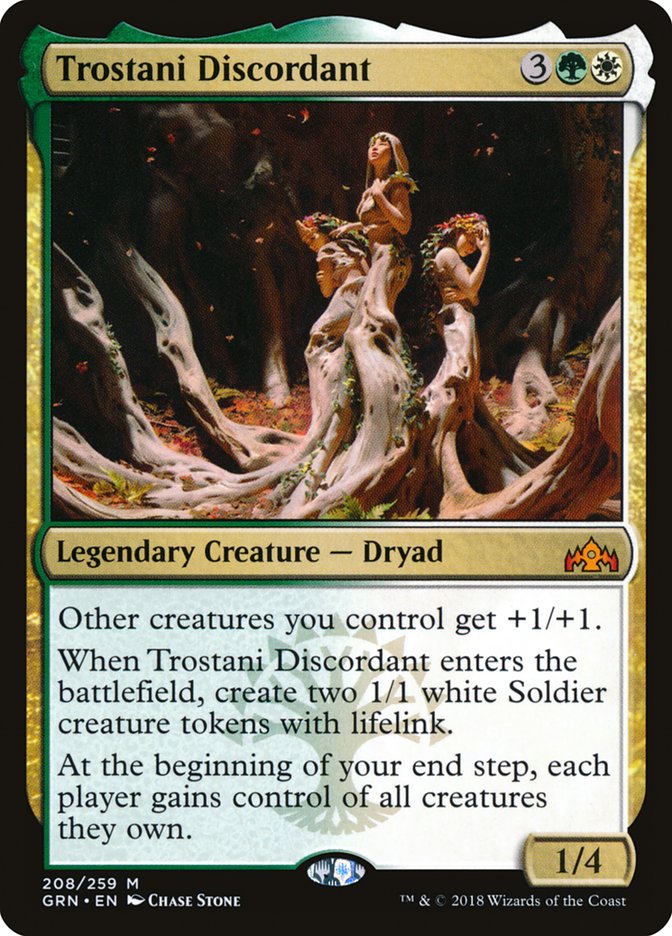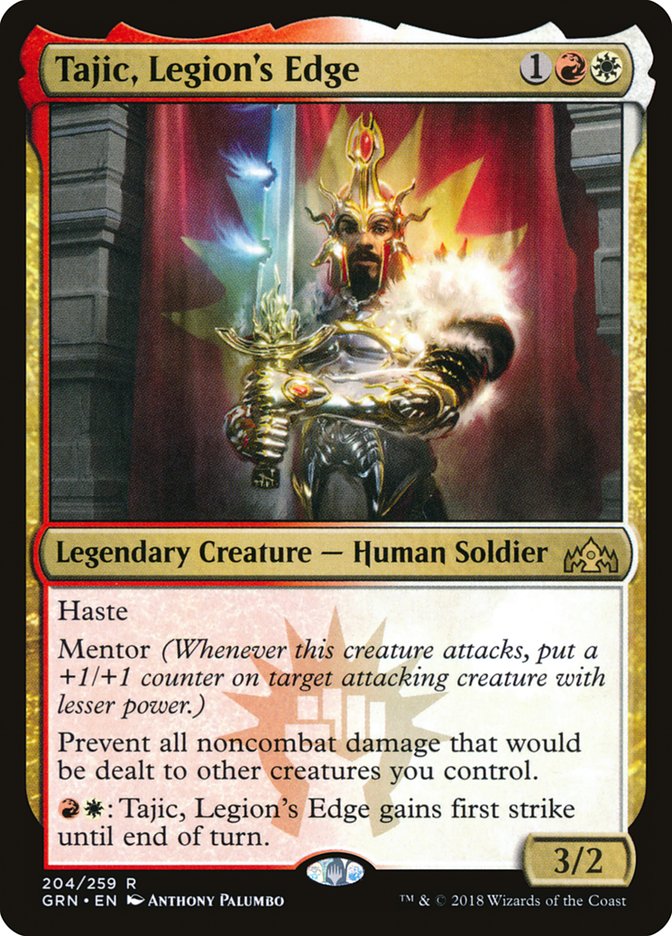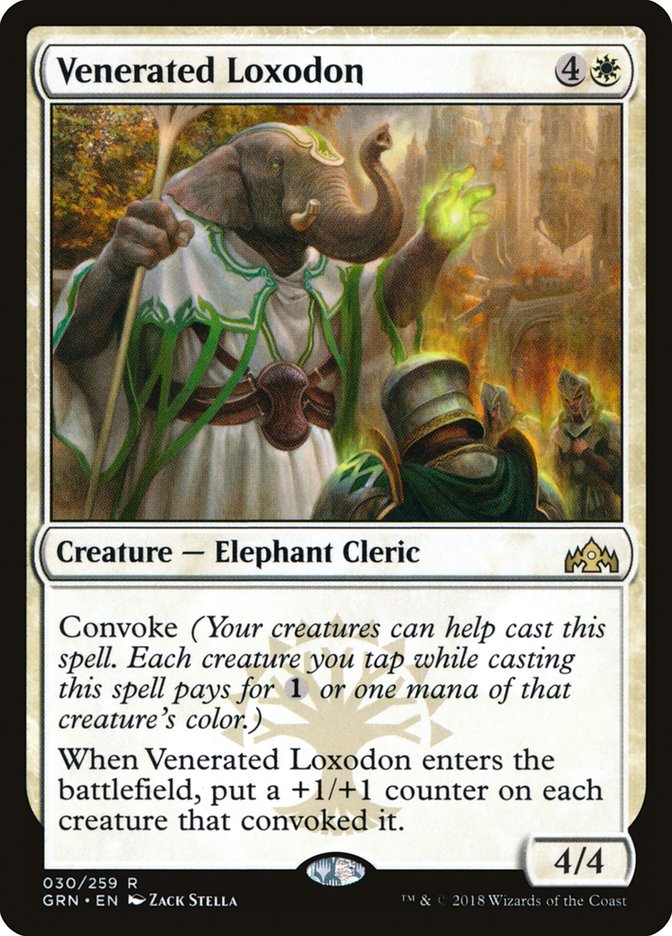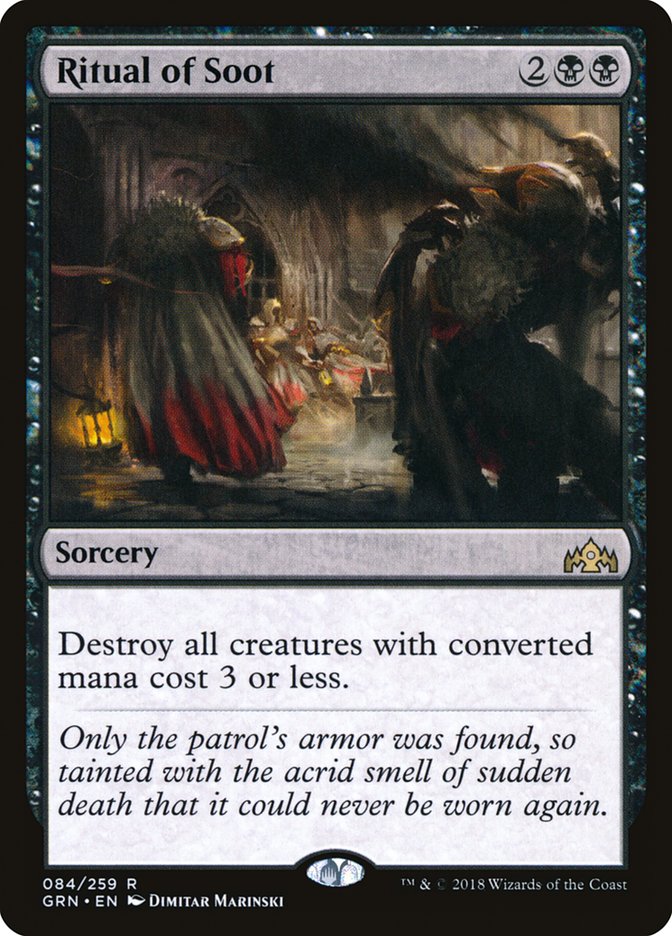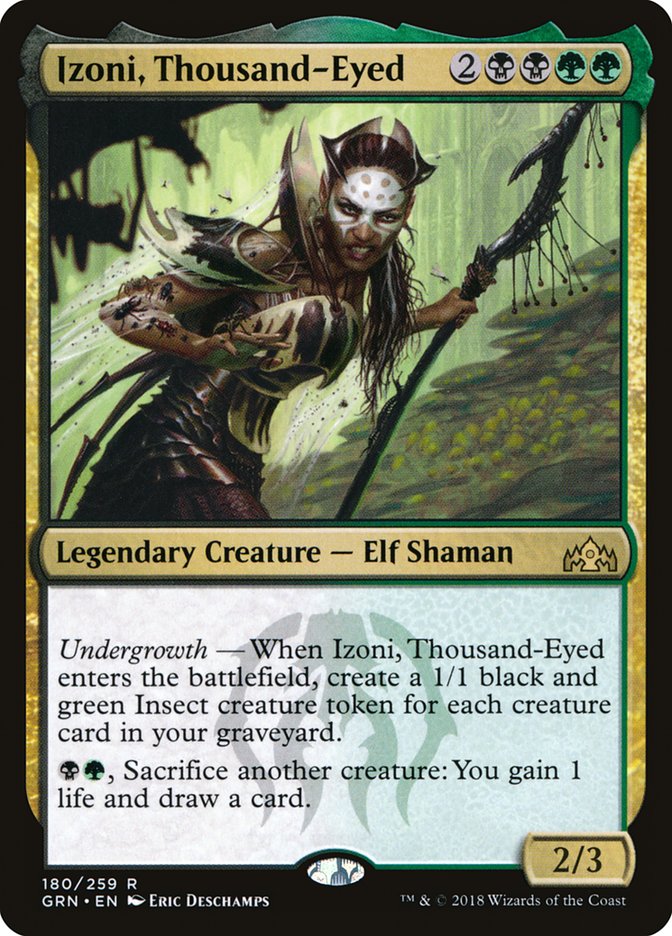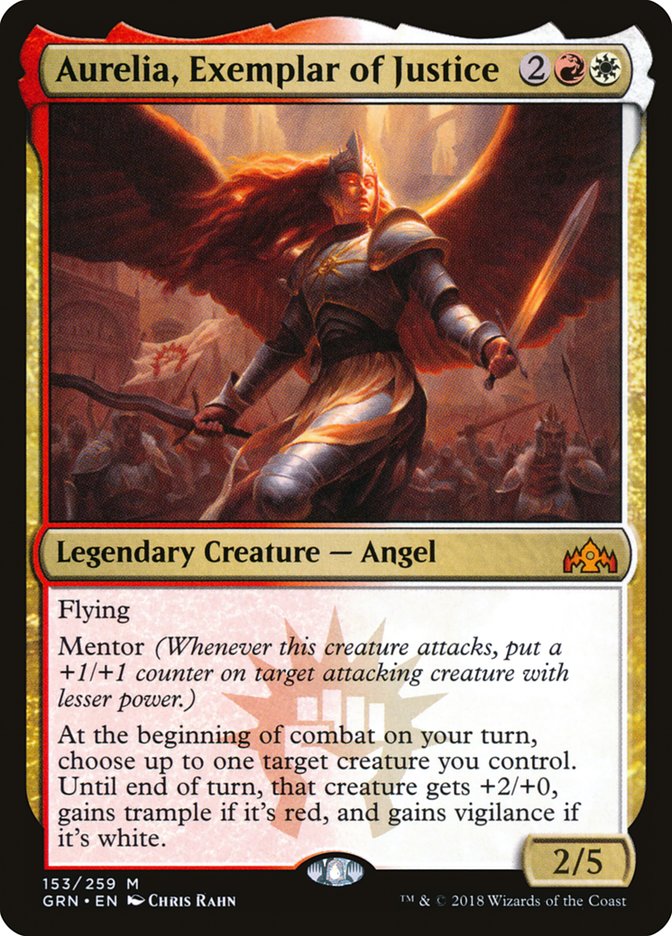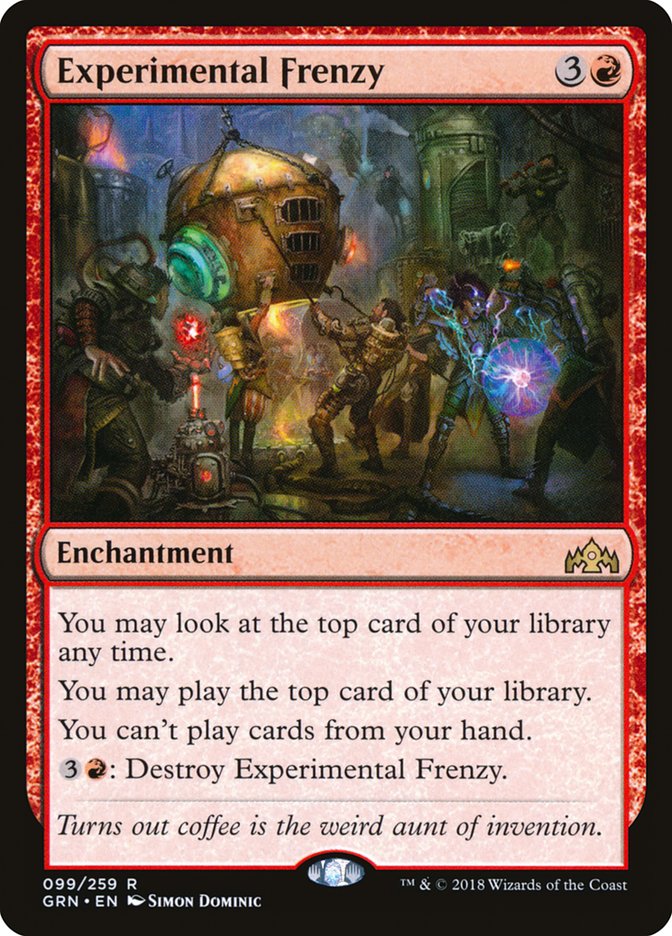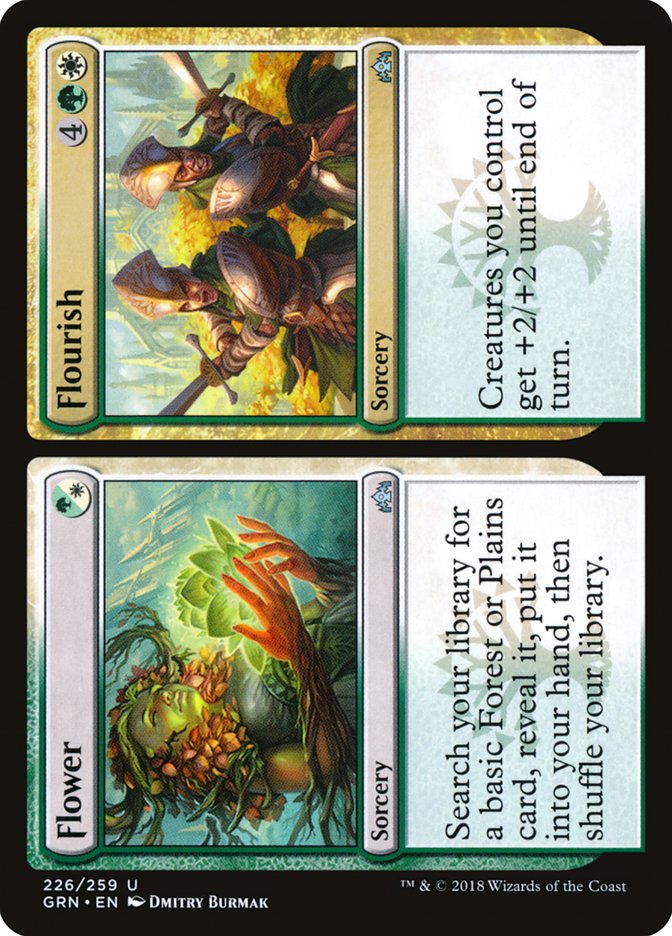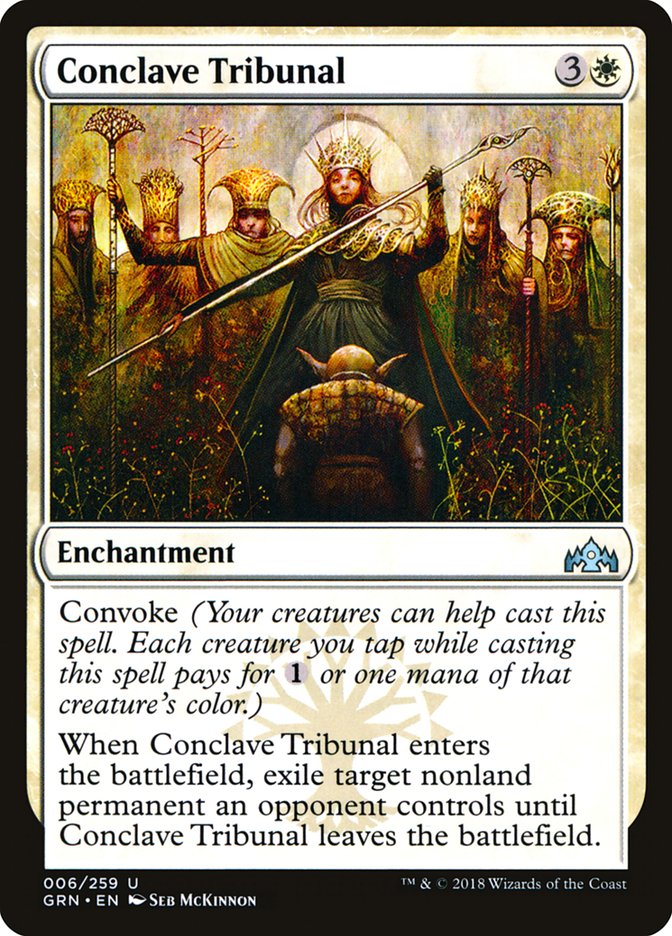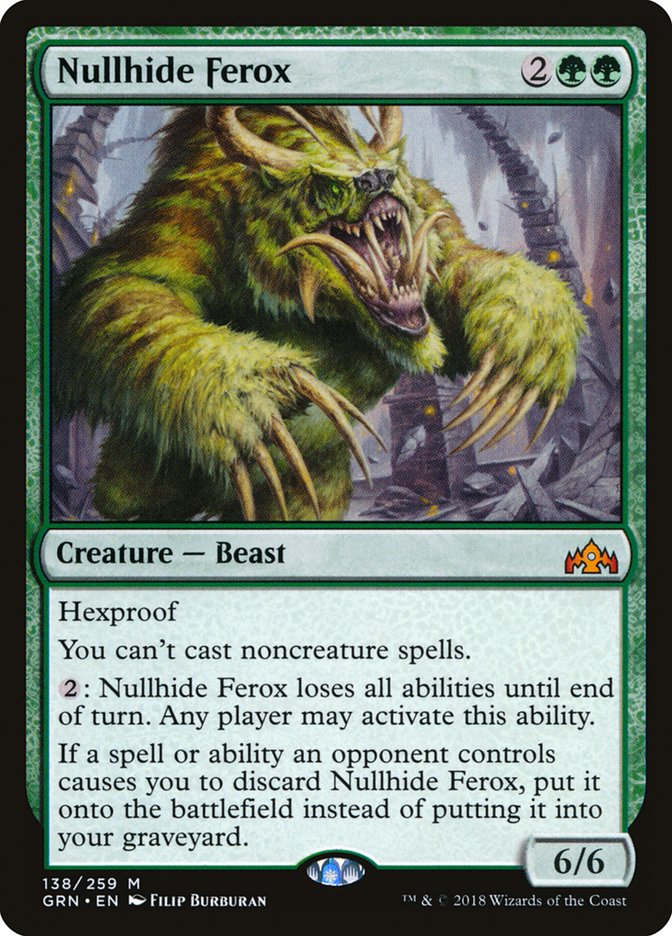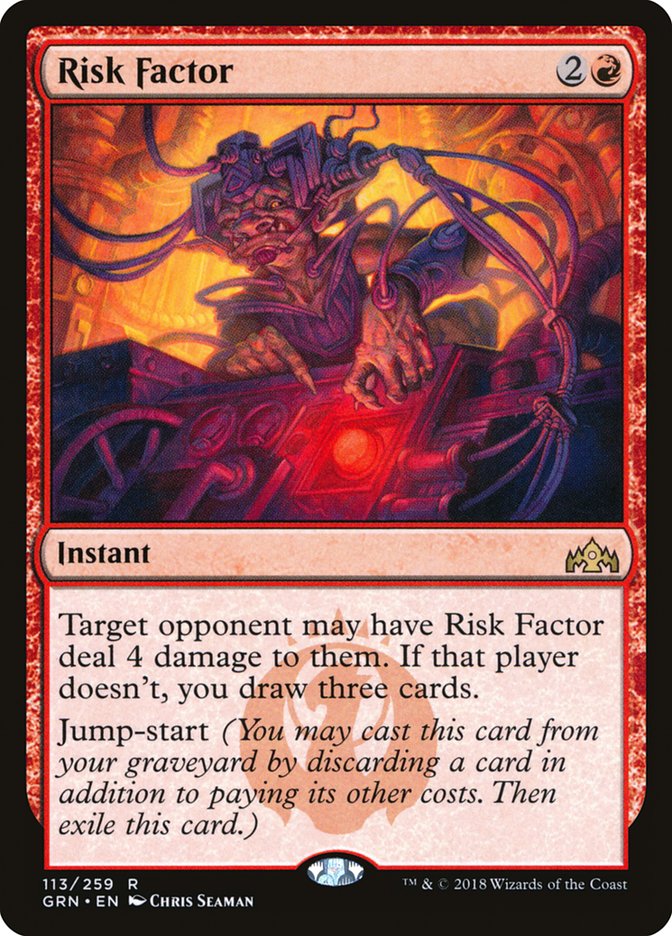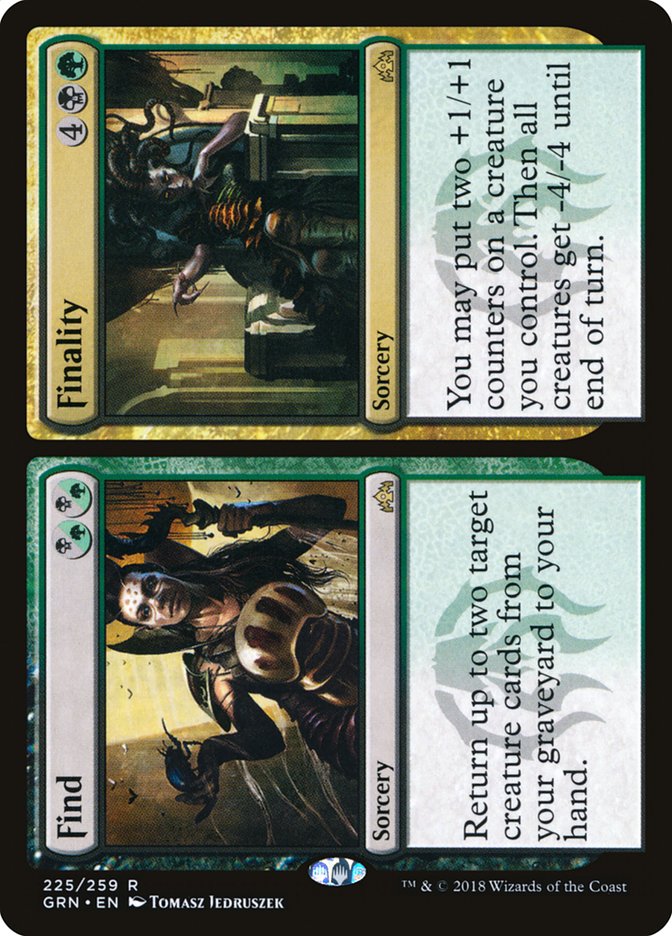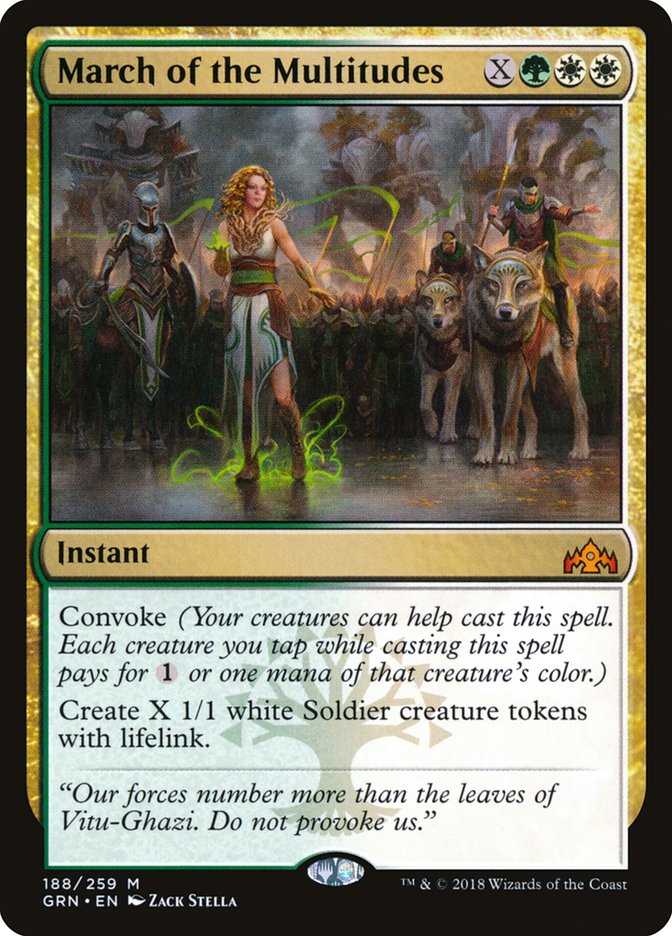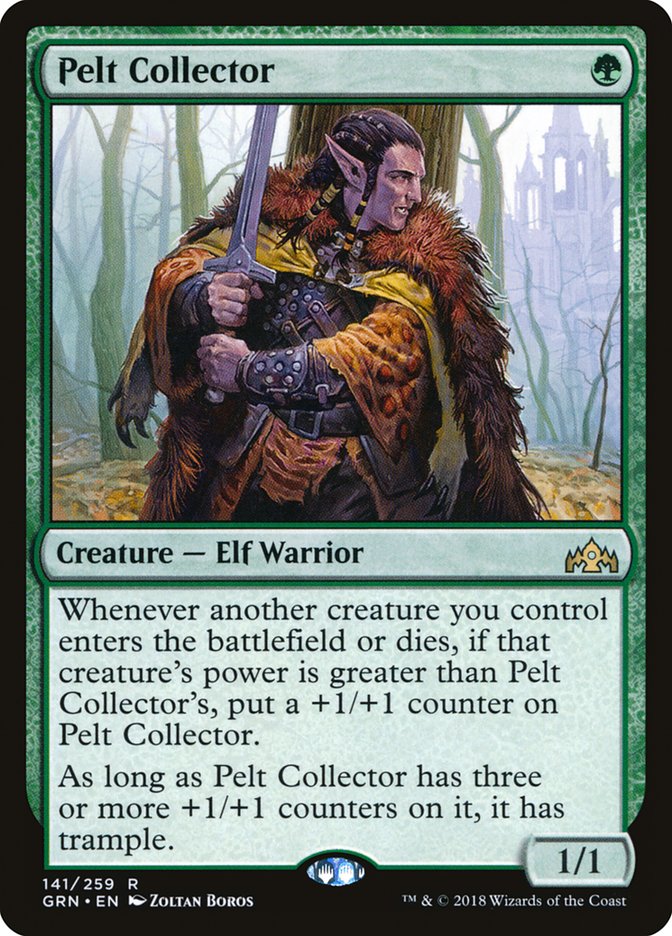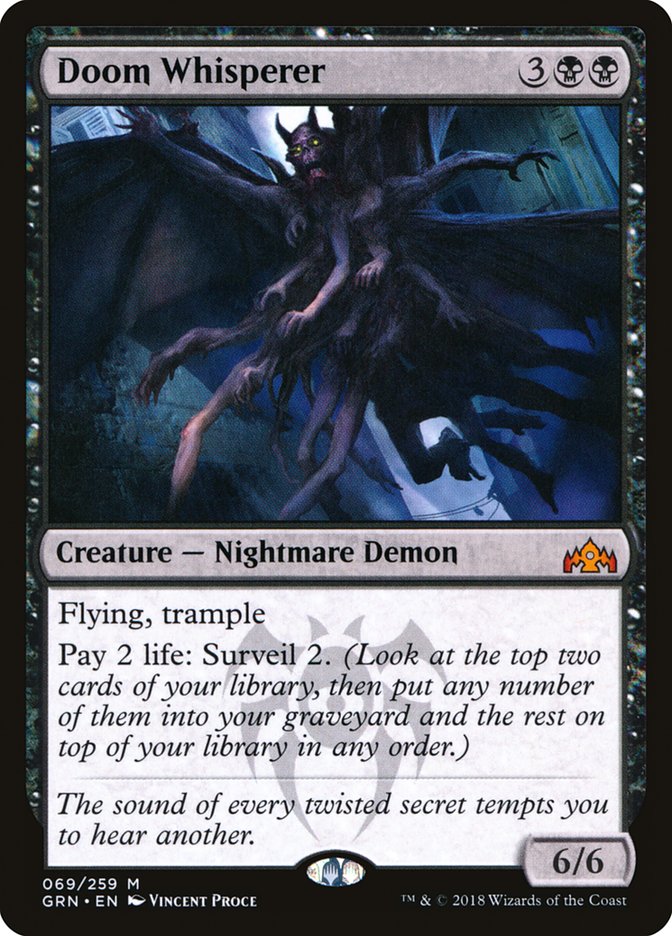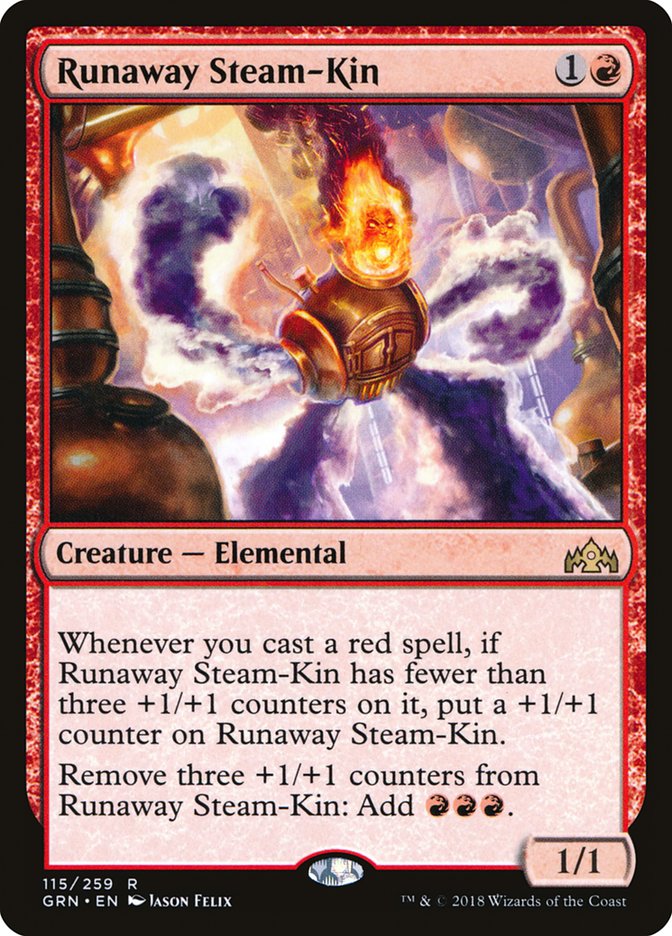It’s that time again!
We have a release of a new set, and therefore, another Top 20 list from
yours truly needs to be published. This list focuses on the cards that I
believe will shine brightest in Standard throughout their entire lifetime
in the format, and I’m not taking other formats into consideration. I’ve
been busy playing as many Standard games as I can ever since Guilds of Ravnica was released on Magic Online even though I’ll be
playing Modern at SCG Columbus this weekend because the format is too much
fun. Good thing I have though, as my thoughts about this list have changed
quite a bit over the last handful of days.
This list was incredibly difficult to put together compared to previous
sets as Guilds of Ravnica has a ton of cards that will impact
Standard. There have been some sets in the past where finding twenty cards
I believed would impact Standard was a challenge, but with this set I
easily found more than double that. I love how deep this set is with
Standard playables and believe this is something that’s vital with future
set releases to keep the format entertaining and fresh. My opinion on why
Standard has been stale over the last few years is because there have been
a small number of cards that have been much better than the rest of the
card pool, which means you had to play them.
Guilds of Ravnica
reminds me a lot of Khans of Tarkir, which is also the set players
point to when they talk about the last time they last liked Standard due to
how it’s built around multi-colored archetypes. Each archetype is deep with
playable cards, making the format diverse and challenging. Abzan and Jeskai
rose to the top during Khans of Tarkir Standard, and it’s likely a
couple guilds will rise to the top of Guilds of Ravnica Standard
as well, but I’m not just going to fill my list with all the cards from a
couple guilds. Instead, I’ll be writing covering all the guilds, with
mono-colored cards getting a boost since they can fit into multiple
archetypes.
Enough chatting! Let’s move on to the list!
CEDitor’s Note: Cmon. I had to!
20. Swiftblade Vindicator
Boros was the first guild I was enthralled with and
wrote about it being the best guild in Guilds of Ravnica
two weeks ago. The creatures are chock full with keywords and being
aggressive week one of a new Standard format is always a positive. Since
then I’ve cooled on the guild a bit but still believe it to be one of the
best options for
#SCGCOL
. Swiftblade Vindicator is the first of three cards from the guild on my
list due to its slight weakness to Goblin Chainwhirler, which will still be
a popular card in the new format. However, put a single mentor counter on
Swiftblade Vindicator and you have a must answer threat, with the more you
add the better. Swiftblade Vindicator also turns pump spells like Integrity
into game changers, making it a card that has a lightning rod on it anytime
it’s on the other side of the battlefield from me.
19. Dawn of Hope
Dawn of Hope is one of the more surprising cards of the set for me. It was
unassuming when I first saw it, and I didn’t read the card or think about
it fully. However, once I played Selesnya Tokens with it for the first time
I realized how powerful of a card it truly is. It can single-handedly build
an army for you while drawing plenty of extra cards. Each time you gain
life, such as each time a lifelinking creature deals damage, you may pay
two mana to draw a card. If Clue tokens taught me anything, it’s that two
mana for a card isn’t too high of a price to pay.
I’ve been very critical of Azorius Control decks early into the format, as
the lack of other win conditions besides Teferi, Hero of Dominaria is
concerning. If I was playing such a deck, I would have one or two Dawn of
Hope in the maindeck as another angle of attack.
18. Vraska, Golgari Queen
Golgari is the most fascinating guild in Guilds of Ravnica. There
are so many different directions to go with the two colors with no obvious
best path. I still haven’t seen a Golgari deck I truly love, but the
potential within the guild is undeniable. Therefore, I wouldn’t recommend
playing it for week one, but it won’t be long until a Golgari deck creeps
to the top of the format.
I really like the design of Vraska, Golgari Queen as a planeswalker, who
represents this fascination well. It isn’t inherently powerful where it
will be slotted into every Golgari deck, but it’s still good enough to
warrant building around it. The minus ability is effectively Abrupt Decay,
an ability that Standard decks will be happy to pay four mana for if it
leaves behind a planeswalker. The plus ability, however, requires extra
permanents that you don’t mind sacrificing, which limits the decks Vraska
can go into. With that said, I expect to see a good amount of Vraska,
Golgari Queen throughout the next couple years of Standard.
17. Disinformation Campaign
Disinformation Campaign is a card that if I would have made this list two
days ago I wouldn’t have been close to putting it on, even though I knew
how good the card is in Limited. Having a card that’s incredibly good in
Limited is usually a sign that it will be good enough for Constructed as
well, although it’s not always the case. At first I thought there was a
chance Disinformation Campaign would see some Constructed play, but that it
was likely too slow for the format. However, after watching a Dimir Control
deck bury its opponent with this card and surveiling over and over, I’m on
board.
16. Trostani Discordant
While a different Selesnya mythic is getting all of the press these days,
Trostani Discordant is another card I overlooked during preview season. The
ability of giving all your other creatures +1/+1 is vital for Selesnya, an
archetype that’s trying to get as many creatures onto the battlefield as
possible. Trostani being legendary hasn’t hurt the five-mana creature as
much as I thought it would because your opponent will assuredly have to
remove it from the battlefield to be able to win the game, which makes
having a second copy in your hand less of a drawback. I expect almost every
Selesnya deck to be playing two to four copies of Trostani Discordant for
the foreseeable future.
15. Tajic, Legion’s Edge
Tajic, Legion’s Edge, on the other hand, is a card that’s been falling out
of favor for me and it would have been much higher on this list a week ago.
Don’t get me wrong though – Tajic is still an incredibly good card, but it
has some issues with how it matchups up against other cards in the format.
If your opponent plays History of Benalia on turn 3 and your turn 3 is
going to be a Tajic, it’s going to be difficult to attack and trade
profitably. Even if you wait a turn until Tajic has first strike, your
opponent will have a second Knight token, and you’ll have to spend valuable
mana to give Tajic first strike. Also, with Mono-Red Aggro being a highly
played deck at the moment, Shock is currently one of the most played
removal spells, which bodes poorly for a 3/2 creatures. Tajic is an
incredibly good card, but it looks like some of the decks at the top of the
expected week one metagame are built to deal with it efficiently.
14. Venerated Loxodon
With Selesnya Tokens being my favorite deck choice for #SCGCOL, it was a
little hard not to rank all my favorite cards from the deck higher. This
was especially true for Venerated Loxodon which has been nothing short of
impressive all week. The 4/4 body is surprising relevant in the format
filled with three-damage burn spells and three-power creatures and putting
+1/+1 counters on your creatures is vital with Goblin Chainwhirler and
Plague Mare around.
13. Ritual of Soot
There’s not much to say about Ritual of Soot except this sweeper is vital
for both Golgari- and Dimir-based midrange and control decks moving
forward. It’s the best black sweeper in the format, and I’d be comfortable
having it maindeck week one due to the amount of expected aggressive
creature decks. Ritual of Soot isn’t perfect, most notably not being able
to destroy Vine Mare or Nullhide Ferox, but it’s still more reliable than
Phyrexian Scriptures.
12. Izoni, Thousand-Eyed
I expect Izoni, Thousand-Eyed to be a big part of the fascinating Golgari
decks that I talked about earlier with Vraska, Golgari Queen. It’s a
one-card army in a guild that has roughly a million ways to recur it from
the graveyard. Like I mentioned before, I believe it will take a little
more time to find the optimal Golgari shell, but Izoni, Thousand-Eyed is
certainly a powerful payoff that’s well worth building a deck around.
11. Aurelia, Exemplar of Justice
Just like how I’m lower on Tajic, Legion’s Edge from a week ago, I’m lower
on Aurelia, Exemplar of Justice for similar reasons. Aurelia doesn’t
necessarily matchup against any particular card poorly, but the competition
for the four-drop slot in Boros is fierce. Rekindling Phoenix is as good of
a card as it ever was, maybe even better now with less overall exiling
effects being played than previously with the Gods leaving the format.
There’s also Ajani, Adversary of Tyrants which works well with the mentor
creatures in Boros, as well as the next card on the list, and it’s hard to
justify fitting four copies of a four mana legendary creature in the
maindeck.
That said, Aurelia is still one of the most single-handedly powerful cards
in the set. Not only is it a 4/5 attacker with flying, vigilance, and
trample any time you want her to be, but if you want her to sit back you
can turn a small creature into a threat each combat. I still really like
Boros as a guild, and I believe Aurelia is very good, but there may not be
room to play many copies due to the fierce competition.
10. Experimental Frenzy
You’ll be hard pressed to find someone who likes Experimental Frenzy more
than me, and my heart wanted to put this card even higher. Experimental
Frenzy can provide Mono-Red Aggro decks with an unheard of amount of card
advantage, which is extremely scary for an opposing deck that’s simply
trying to stabilize. The downside of not being able to cast the cards from
your hand isn’t much at all when paired with a low curve where Experimental
Frenzy is the last card cast. After untapping with it, you can continue to
play every spell from the top of the deck until you run out of mana or see
a second land. Experimental Frenzy should at least see sideboard play in
every non-Izzet Red Aggro deck with room to be built around in maindecks as
well.
9. Flower//Flourish
Honestly, I think I may have Flower rated too low at number nine. We’ve
seen how powerful this effect has been in recent sets with Attune with
Aether and Traverse the Ulvenwald, and Flower is just as good as the other
two. Not only does it allow you to play less lands in your deck while still
hitting your land drops, but the two card combination of an end step March
of the Multitudes, untap, and Flourish is going to be format defining. Ross
Merriam picked
Selesnya to be the best guild in Guilds of Ravnica
before anyone else due to the power of Flower, and after playing with the
card over the last week, I’d have to agree with him.
8. Conclave Tribunal
Conclave Tribunal is the premier removal spell in the set for Standard as
far as I’m concerned, which is likely surprising to some. The downside of
Assassin’s Trophy allowing the opponent to search for a basic land from
their library and put it on the battlefield is huge in Standard because the
format is slower and cards are more expensive. Also, Golgari not only has
plenty of other good removal spells but is also a guild that’s based around
putting as many creatures as you can into the deck. I’m not saying
Assassin’s Trophy isn’t good enough to see Standard play, but it’s not one
of the Top 20 cards for me.
On the other hand, Conclave Tribunal is right up there with the most
important cards in the set. Being single color means it can go into more
decks and even when it’s not convoked, it has a perfectly reasonable
casting cost for exiling any nonland permanent. It also has the upside of
being able to be cast with your creatures due to having convoke, so at
times you’ll be able to cast it for effectively zero mana, which is absurd.
7. Nullhide Ferox
Nullhide Ferox was one of the more difficult cards to rank on this list.
The stats on the card are pretty absurd for a four-mana creature, and it
has some weird abilities, but at the end of the day it’s just a big
creature. But if we’ve learned anything from Steel Leaf Champion and
Ghalta, Primal Hunger, playing big creatures is often good enough to win
games of Magic. Not only does Nullhide Ferox fit perfectly into Mono-Green
Aggro immediately, but I wouldn’t be surprised if it’s a big part of
Standard after the next set when Gruul becomes a part of the format.
6. Risk Factor
”
Risk Factor is the sixth most impactful card in Standard from Guilds of
Ravnica? But punisher cards are never good!”
-someone, somewhere
Well, someone from somewhere, that’s what I thought when I first read the
card as well, but Risk Factor is honestly really good. The first copy of
Risk Factor is usually pretty easy to ignore and you just take the four
damage instead of giving the opponent three cards, but with jump-start it’s
usually pretty difficult to take another four damage and still survive the
early pressure or other burn spells red decks can put together. You want to
be ahead when you’re casting Risk Factor, but that’s not a hard requirement
for a red deck. Risk Factor is absolutely good enough to deserve this slot
on my Top 20 list, which is really saying something for all of the other
good cards that have come before it. If you’re holding out on playing the
card because you just believe punisher cards are bad, give it a try.
5. Find//Finality
If Risk Factor isn’t my most surprising card this high up on the list for
you, maybe Find is. I absolutely love Find in not only every single Goglari
deck but in the sideboard of Mono-Green Aggro against removal-heavy decks
as well. Double Raise Dead is an exceptionally powerful and underrated
card. Sure, it’s usually not going to be good on turn 2, but in the mid- or
lategame, you’re spending one less mana for a Divination that’s also more
powerful by providing selection. Getting the two best creatures from your
graveyard is much better than drawing two random cards when built around
properly, something the Golgari decks can do with ease.
None of this even takes into consideration that there’s more to the card.
Finality is a quality sweeper when needed, which is a luxury. The biggest
downside to playing sweepers when you’re playing creatures is that whenever
you’re ahead on the battlefield, the sweeper is a dead card in your hand.
Finality is only a sweeper when you need it and has another incredibly
useful function when it’s not needed.
I expect Find to be a big part of Standard for the next two years, and it’s
my current pick for most underrated card in the set. I’m confident in
ranking it as a top five card of Guilds of Ravnica.
4. March of the Multitudes
March of the Multitudes is incredibly similar to Sphinx’s Revelation in
more ways than just casting cost, something I didn’t realize until talking
with Ross Merriam about it on our way home from #SCGBALT a couple
weekends ago. When Sphinx’s Revelation entered Standard, people looked at
it as a big X spell that you’ll only want one of as a trump in the very
lategame. However, as people played the card more and more, they realized
that casting a small Sphinx’s Revelation for two or three would gain them
the life and give them the cards they needed to prolong the game a little
later, in which case they would want another Sphinx’s Revelation for five
or six. This lead to a final Sphinx’s Revelation that would completely bury
the opponent.
Move ahead to March of the Multitudes and looking at the card at first, I
thought it would be a nice big X spell to use as a trump in the very
lategame. However, the first March of the Multitudes can be cast to give
you enough lifelinking blockers to prolong the game, with the second or
third pulling completely ahead of the opponent. Discussing this with Ross
is when we realized it was likely better as a four-of than a one-of, so I
started with four when I first started playing Selesnya Tokens on stream
last week and haven’t looked back.
While March of the Multitudes will be a format defining card right away in
Standard, it’s still a multi-colored card that doesn’t have as much upside
throughout its Standard life as the top three cards on the list.
3. Pelt Collector
Pelt Collector is up towards the top of my list for probably obvious
reasons. It’s a very good one-drop that will be a big part of Standard for
the next two years. It will likely fit into Simic and Gruul decks better
than Golgari and Selesnya, but before those two guilds are fully supported,
it also has a home in Mono-Green Aggro. The fact that Pelt Collector’s
ability triggers when creatures die as well as enter the battlefield is an
important part of the card that allows it to be a better topdeck in the
lategame than it otherwise would be. This allows you to play it before
combat and trade off bigger creatures, growing the Pelt Collector. One-mana
creatures that have the potential to trade with much more expensive
creatures are usually a big part of Standard, and I expect Pelt Collector
to be the same.
2. Doom Whisperer
Doom Whisper is a five-mana 6/6 flying trample creature with synergistic
upside. Just like everyone else, I thought the ability would be some kind
of drawback when I first read the card, but no, it’s just a creature that
synergizes perfectly with what Golgari and Dimir are trying to do in the
set. Add in that it’s a mono-colored card that will be easy to add in to
multiple decks in the future and Doom Whisperer deserves to be at the top
of the list. It’s only number two though, as there’s still another card
that looks like it will be the most played card in the set.
1. Runaway Steam-Kin
Runaway Steam-Kin is an incredibly good card and will be a cornerstone in
red aggressive decks for the next two years. It’s a two-mana creature that
grows to a 4/4 quickly and can also provide extra mana to be able to dump
your hand, an ability an aggressive deck values highly to get ahead of the
opponent. Afterwards, you can use cards like Risk Factor or Experimental
Frenzy to finish the game off. Moving into rotation, I thought Mono-Red
Aggro was going to take a big hit since it was losing so many cards, but it
still looks like the deck to beat for
#SCGCOL
.
Time For SCG Columbus!
There you have it, my Top 20 Standard Cards from Guilds of Ravnica
! As always, I’m interested to hear which cards you believe I’m under or
overrating. This was certainly the hardest list I’ve put together so far,
but with the amount of games I have under my belt, I’m confident in my
picks. I can’t wait to finally see all these cards in action at #SCGCOL this weekend.
It can’t come soon enough!




